"What Are LY Corporation's Values?"--Dialogue Between CPO Jungho Shin and Officer in Charge of HR, Ryosuke Sakaue
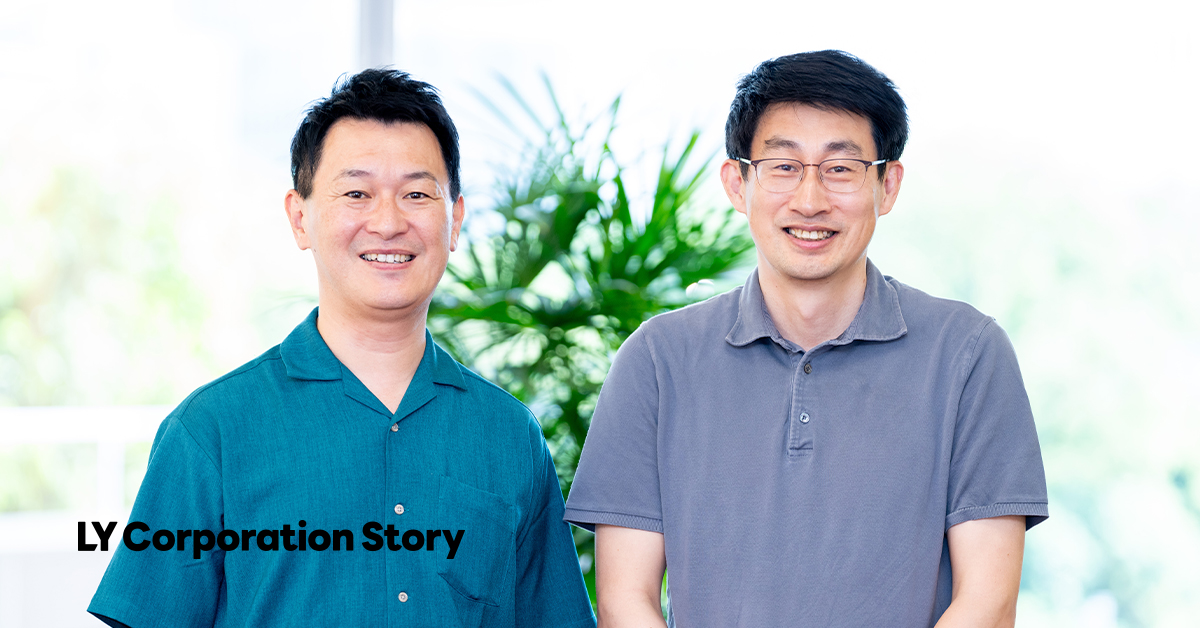
The LY Corporation Group embraces values centered around "Users Rule," "Get It Done," and "Lean & Mean Teams."
To learn more about LY Corporation's values, we interviewed Jungho Shin, primary architect of these values, along with Ryosuke Sakaue, officer responsible for human resources. They provided an in-depth discussion on the rationale, development process, and underlying meaning incorporated in each value.
The DNA of the LY Corporation Group
――To begin with, why do companies need values? We'd like to hear your thoughts.
Shin:
A company is essentially a place where people come together to achieve things they couldn't accomplish alone. I believe that just as individuals have distinct personalities while they have limitless potential, organizations too possess a unique identity, which is reflected in corporate culture.
Similarly, just as people have DNA, companies have their own form of "DNA," which I see as the company's values. When people from diverse backgrounds work together, it's crucial to clearly articulate the values and direction the company holds dear. Unless companies clarify the DNA, which companies have just like human beings, it's difficult to move forward in a unified way. I think that's why values matter--not just for us, but for organizations in general.
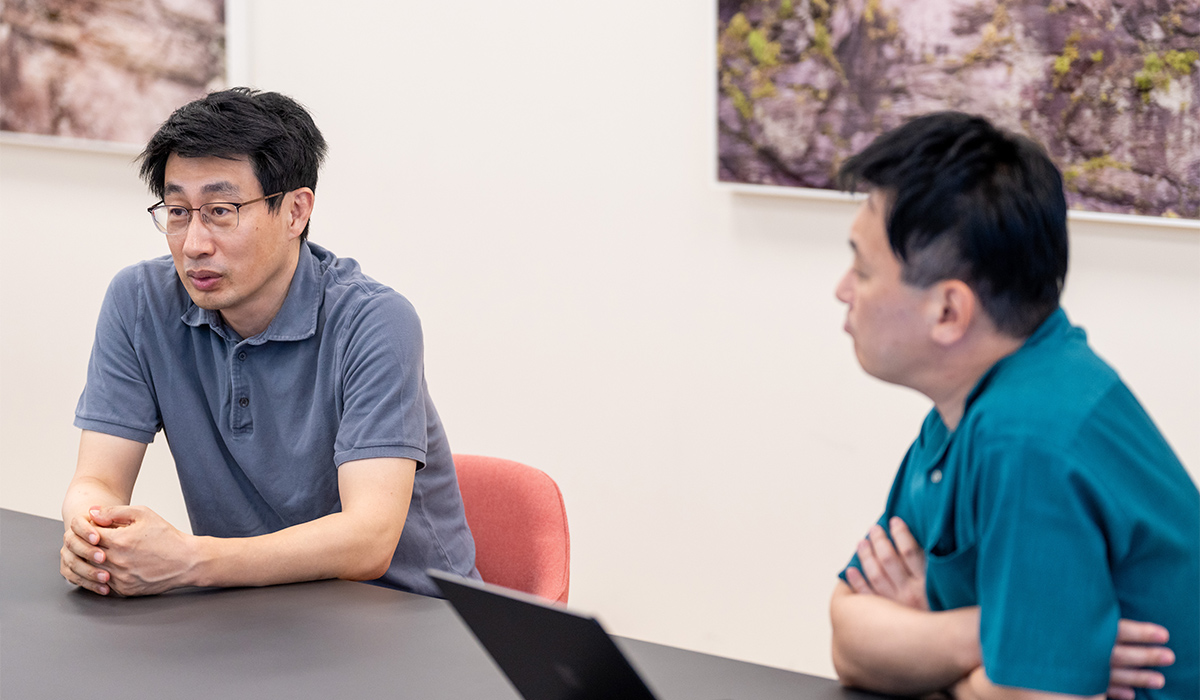
Sakaue:
Following the merger between LINE and Yahoo Japan, LY Corporation now comprises individuals who began their careers here as well as those with professional experience from other companies. With people coming from a variety of cultural backgrounds, the values serve to clearly articulate LY Corporation's shared principles and work standards.
"Users Rule" Accounts for 90 Percent
――What were the key points you focused on when creating the current values?
Shin:
In the Value Book,* the three elements are presented side by side due to the layout, but the most important one is "Users Rule." The other two--"Get It Done" and "Lean & Mean Teams"--are more about the approach. Given that we must first understand users and create products users genuinely desire and will continue to use, the entire development process--from inception to final evaluation--is ultimately defined by the users. That is why I consider "Users Rule" to account for more than 90 percent of what truly matters.
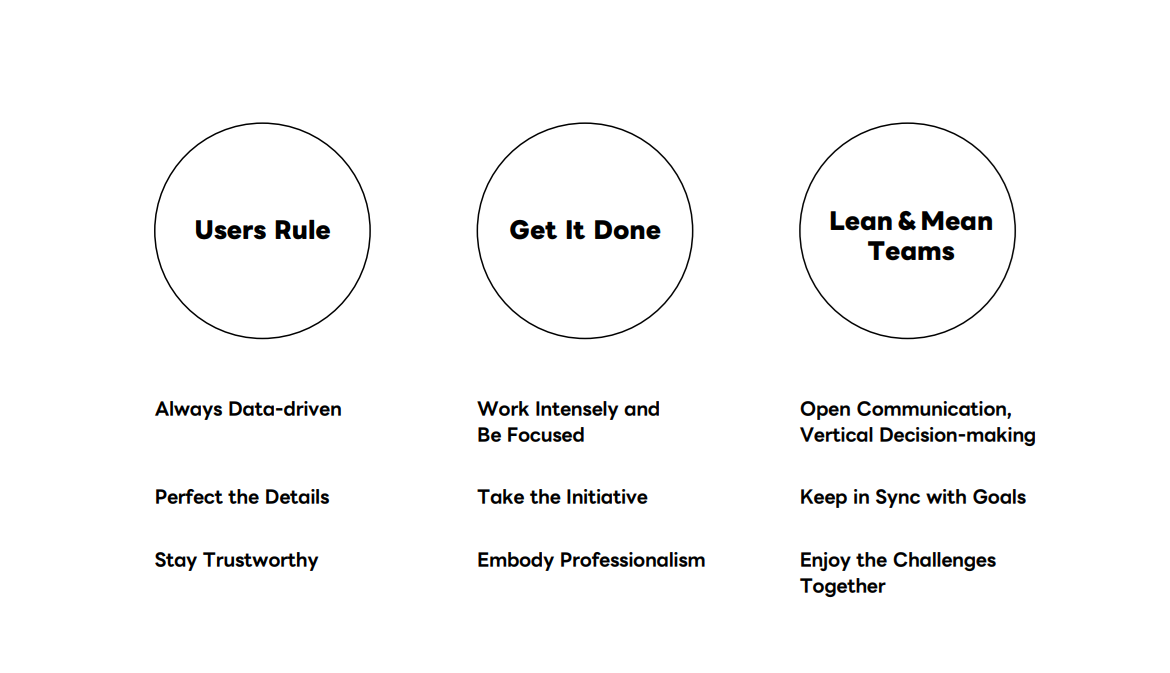
*LY Corporation Group Our Mission & Values ver.1.0
――Sakaue san, what was your first impression when you saw these values?
Sakaue:
I wasn't too surprised; LINE and Yahoo Japan had a lot in common to begin with. One thing I thought was important, though, was the need to avoid falling into what's often called "big company syndrome." As "Users Rule" suggests, we can't be a company that prioritizes our own bosses over the users, and as "Lean & Mean Teams" implies, we can't rely on massive, mothership-like teams. Even though we have grown into a big company, I felt these values really captured the things we need to hold onto. Also, since the values aren't limited to any specific role or function, I felt they could be broadly applied and are easy to use.
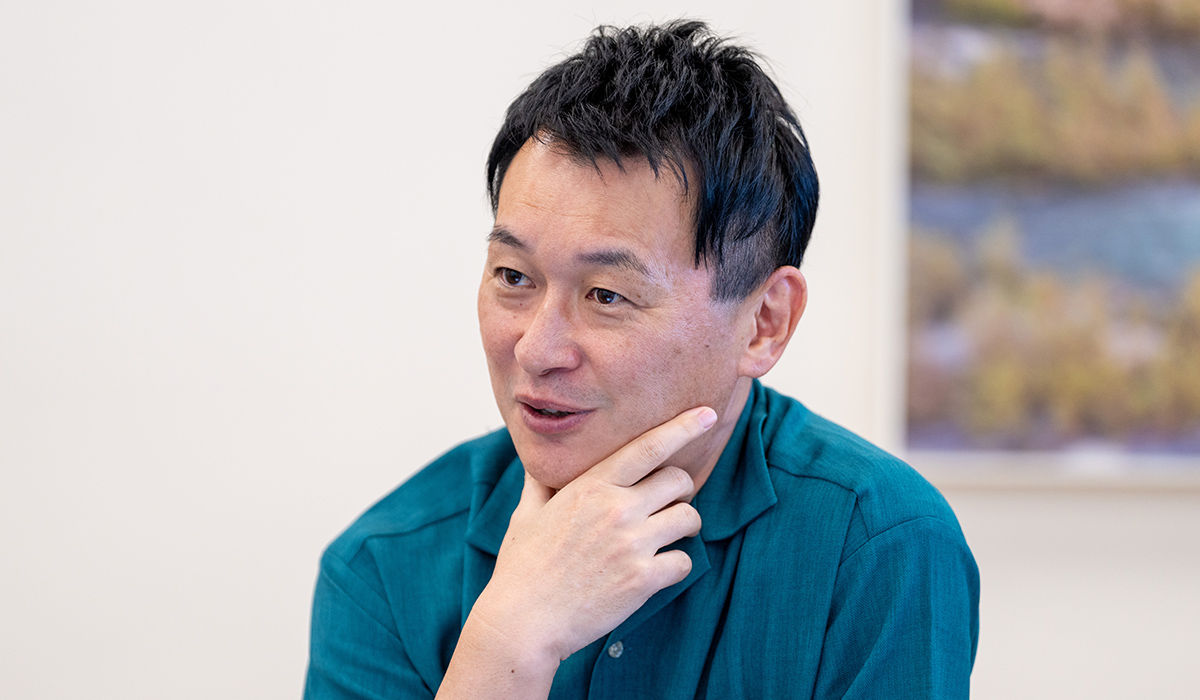
What Is Not Written in the "Value Book"
――From here, we would like to explore each value in greater depth, starting with "Users Rule."
Shin:
To make the core idea of "Users Rule" easier to understand, we have broken it down into three elements. The first is "Always Data-driven." This actually has two meanings, some of which aren't fully articulated in the Value Book.
Always Data-driven
The most crucial element when creating a service is to identify user needs accurately. If you misidentify what our users need then your very starting point is going to be wrong. You must analyze the data in depth, not just going on a hunch, and use that as the basis for your decisions. Only then will you be able to uncover our usersʼ hidden needs. Furthermore, user needs are always changing, so you must be attentive to their changes and keep your data up-to-date.
First, as Sakaue san mentioned, when making any kind of decision, the most important question is: "Is this good for the user?" Decisions made solely based on hierarchical authority often result in unsuccessful services, because the user's perspective is missing. Then how can we ensure the user's voice is reflected? This is where data comes in. Data speaks for the users. That's what we mean by being "data-driven."
The second, and perhaps more significant point is that data is not everything. This is because users themselves often don't know what they truly want. But once they try something, they might realize, "This is exactly what I was looking for." For example, when smartphones first appeared, if you had asked people whether they were dissatisfied with their existing mobile phones, over 90% would have said no. But once they experienced smartphones, they realized that this was what they had actually been waiting for.
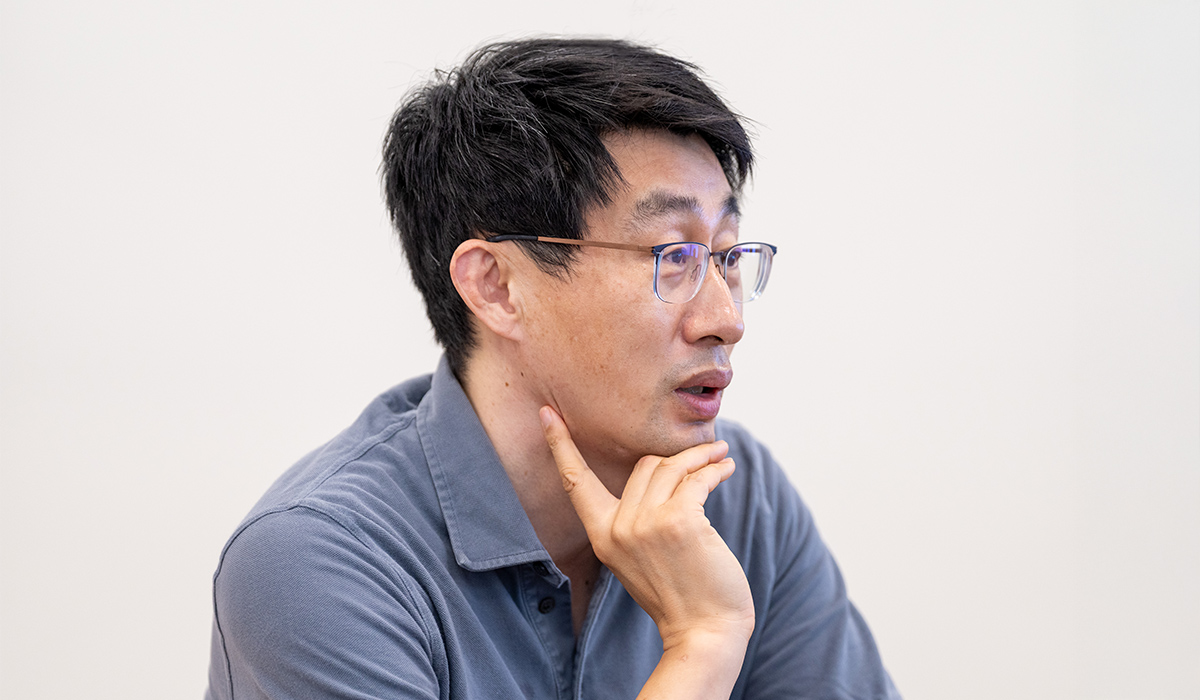
Shin:
Therefore, what's truly important is not simply being data-driven, but recognizing that without being data-driven, we are unable to accomplish anything meaningful. While data-driven thinking must serve as our foundation, true success lies in delivering "WOW" and "!" moments--experiences that even users themselves didn't know they wanted. Ultimately, everything we do should be for the users, and data is just a tool to prioritize the needs of the users. Data isn't everything; it's simply the starting point. Without a data-driven mindset, one is fundamentally unqualified to develop services.
Perfect the Details
Once you have pinpointed the users' needs, you must create services with the details totally perfected, like only we can offer. We can only survive the fierce competition of the marketplace when we offer unique and distinctive user experiences that stand out from the multitude of alternatives. What makes experiences distinctive lies in the specifics, not the grand idea, so you must pay particular attention to the finest details. Furthermore, the work doesnʼt end with the release of a service. There is no guarantee that the users who were initially satisfied with a service will still use it a year later. You must aim for a standard that exceeds their ever-changing expectations, observe their reactions, make the necessary modifications, and do what it takes so our users continue to choose us.
For "Perfect the Details," imagine going to a restaurant. No matter how great the food is, small details such as dirty tables or rude staff can ruin the experience. Top-tier restaurants pursue perfection in every aspect, down to the smallest detail. Similarly, to deliver the best possible services to users, we must be relentless in our attention to details.
And "perfection" means that nothing unnecessary remains. I think that was a quote from someone famous.* In other words, the true meaning of "Perfect the Details" isn't about adding more minor elements, but about removing what's unnecessary and simplifying. It is important that this distinction is clearly understood. Perfect design is simple. Showing every possible feature and making things complicated is not "Perfect the Details." That is just poor quality.
*"Perfection is achieved not when there is nothing more to add, but when there is nothing left to take away." -- Antoine de Saint-Exupéry
Stay Trustworthy
Until now, we have grown through earning the support and dedication of our users. But as our business has grown, so too has the scope of what we consider "users," beyond just the people who use our services to now include shareholders, governments, local communities, partners, and employees. And these users demand a higher level of trust. Accordingly, in order to maintain their trust and further strengthen that bond, you should always be thinking in terms of "how" you are achieving your goals, not just "what" youʼre achieving. The level of trust that users demand is always changing and may be higher in the future. You must always be attentive to those changes and respond promptly.
"Stay Trustworthy" is becoming increasingly important.
We already operate services such as Yahoo! JAPAN, LINE, and PayPay, services that have effectively become part of the social infrastructure. While functionality, design, and innovation matter, if we fail to earn users' trust as a reliable part of that infrastructure, users will ultimately leave. This means that we, as a whole, need to fulfill the role as a trustworthy infrastructure.
Firsthand Experience from Creating LINE
――Out of so many possibilities, how did you narrow it down to these three elements?
Shin:
We spent a lot of time in discussions within the management to figure out the accurate way to express "Users Rule." We gathered a wide range of opinions and went through multiple drafts before finally narrowing it down to these three elements. As I mentioned earlier when discussing "Always Data-driven," there were actually other ideas we wanted to include. But since we aimed to fit everything onto a single page, this is the form we ultimately arrived at.
――Does the content reflect your own personal experiences?
Shin:
Of course. When we launched LINE in 2011, the service that was expected of our company was not a "messenger." No one said, "Please create a messenger." But what users in Japanese society needed most at that time was "communication."
The growth of LINE was driven by our commitment to prioritizing user needs over our own ideas of what we can create. And this is how LINE service earned support and grew. Shifting course based on what users want--rather than sticking to what we personally want to create--leads to far better results. That's something I can say from personal experience.
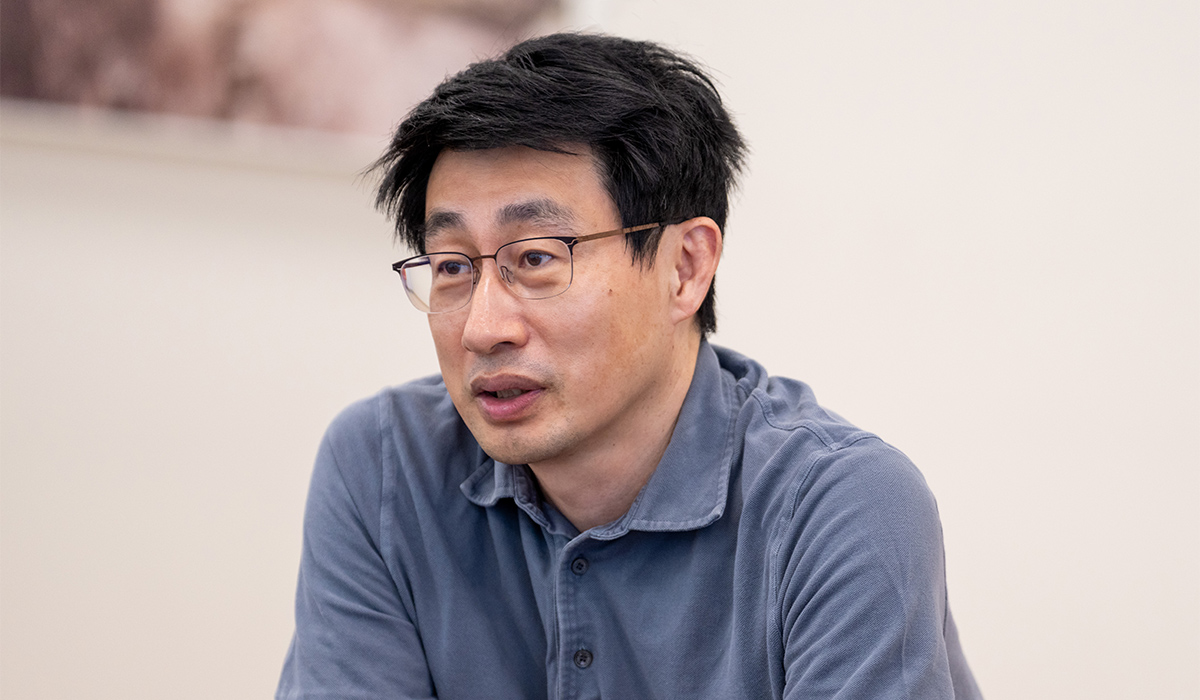
A Broader Perspective Beyond Product Development
――From a back-office standpoint, such as HR or Legal, how do you envision these principles being applied?
Shin:
Lately, I've been having more one-on-one meetings with people from various departments, and when I speak with those in Legal, they always say the same thing. For example, peer reviews* are important for ensuring the reliability of outputs. However, we must also ensure speed in execution. It's not enough to simply conduct peer reviews as a formality; we need to identify bottlenecks, measure processing times, and assess whether resources are being allocated to the most critical matters.
* The process in which individuals with the same area of expertise assess the work of each other.
In back-office roles, the "users" are members of the company. Understanding their needs and pain points, and using data to improve upon them, is core to the role. In that respect, it is quite similar to product development. I believe this is true also for the infrastructure division and HR division.
Sakaue:
I believe what Shin san just said also applies to business-facing services. In fields such as advertising and sales promotion, identifying and responding to client needs is paramount. And if you are in the back-office, what matters is what you are providing to the members in the company. Again, it is essential to adopt a data-driven approach and maintain a bird's-eye perspective.
――How do you regard "Stay Trustworthy," Sakaue san?
Sakaue:
Earning individual users' trust is crucial for the company as a social infrastructure. Personally, as CFO, gaining the trust of shareholders and investors is also important. What matters most in "Stay Trustworthy," I believe, is how we proceed in the right way. Negative surprises are the fastest way to lose trust, which is why it's essential to build steady communication every day. Only through that can trust truly be established. Trust is not something that is built all at once--it is formed gradually through sincere and sustained engagement.
When Your Fingertips Do the Thinking
――What about the next part, "Get It Done"? Can you elaborate with a concrete example?
Shin:
To truly practice "Users Rule," it's not enough to say, "We tried hard but couldn't complete it." We need to work thoroughly and be able to say, "We got it done and satisfied our users." Merely making an effort holds little value; what truly matters is getting things done to the end. And to do that, we need to manage our time effectively. Everyone has the same 24 hours in a day, and we can't double that compared to other companies. So if we want to get things done within the same amount of time, the only path is to "Work Intensely and Be Focused."
Work Intensely and Be Focused
You will face numerous problems to solve and, yes, each of them will be difficult. Therefore, you must understand the nature of your work first--what you are doing, why you are doing it, and for whom. Then prioritize your tasks and focus on solving the problem at hand. You can only solve problems when you properly allocate your time and effort according to the importance of each issue. Whatʼs more, you will find that you can come up with new, out-of-the-box solutions when youʼre intensely immersed in the work, rather than simply "working hard."
In other words, we need to keep asking ourselves, "What is it that users truly need?" and "Is this feature really important in delivering that?" and then focus relentlessly on the essentials. It's like learning English--some people get way better after ten hours of study, and others don't. The ones who make fast progress are usually those who dive in, keep speaking even if they make mistakes, and stay intensely focused. On the other hand, someone who just memorizes vocabulary words won't become a good speaker.
This might be slightly off-topic, but when I was a developer, I used to get so immersed in my work that it felt like my fingers were doing the thinking for me.
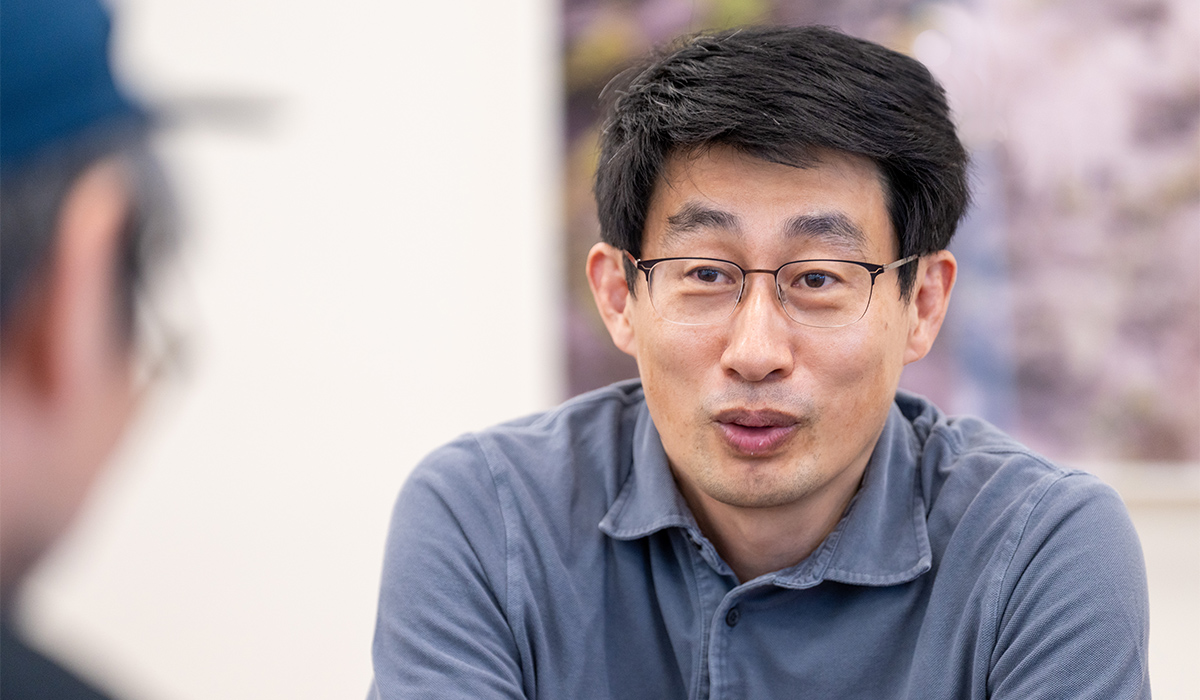
――What? The fingers do the thinking?
Shin:
Yes. It's a feeling where it's not your brain doing the thinking--your fingers just move on their own. I believe that when professionals of any field enter a state of deep concentration, they experience something similar. And in those moments, the quality of output can be a hundred times greater, even within the same amount of time. The question is whether we can increase the density of that time and focus on what truly matters. I believe that's the first step toward "Get It Done."
――What about "Take the Initiative"?
Take the Initiative
The more difficult a task is, the harder it is to find a solution when you are limiting yourself to just your own tasks. Take the initiative to look at the whole process and if you find a better method, talk to your peers first and work together, even if something is not on your task list. Note that this is not about simply pinpointing problems or criticizing. It is important to dive into the process and collaborate. Only with such efforts will you be able to achieve your ultimate goal.
Shin:
The larger an organization becomes, the easier it is for issues to fall through the cracks or become "poten hits"* in baseball terms. People tend to think, "I'll just focus on my own area." But since no organization operates in perfect sync, when something is about to be overlooked, someone, regardless of their role, needs to step in and cover it. If something is overlooked from the user's perspective, but team members respond with, "This is our territory, so don't interfere," or "It's not my job so I won't say anything," we will never be able to create good services.
* "Poten hit" is a Japanese baseball term that refers to tasks or problems that are left unattended because ownership is unclear.
This is why "Take the Initiative" is critical. Even if you are not a designer, you should raise concerns when a design seems flawed from the user's point of view. Even if you are not an engineer, you should speak up if you sense server issues. We need an environment where everyone can freely share their opinions.
In that sense, I believe it's important to have an organization where people can argue. Arguing does not mean fighting. It means being able to express differing opinions openly, based on a foundation of mutual trust.
If everyone keeps "Users Rule" in mind and respects each other as professionals, they can expect the other to receive the harsh feedback in good faith, as something offered for the benefit of the users. Likewise, when receiving feedback, instead of reacting with "Don't talk about what you don't understand," they will face the feedback sincerely, and consider whether there might indeed be an issue. That kind of foundation is what enables constructive discussions. To foster a strong sense of ownership, I believe that an organization that can tolerate constructive arguments and the trust that supports them are indispensable.
Embody Professionalism
In order to "Get It Done," meaning to accomplish the challenging tasks we have before us, each one of us must be professional. A "professional" is someone who regularly achieves outstanding results in their work, beyond what most people can do. And "outstanding results" means the kind of results that greatly exceed the expectations of everyone you work with. Understanding that rigorous standard, you should be striving to confidently call yourself a professional. An organization made from such excellent professionals is an organization that can tackle any challenge that comes its way and ultimately succeed.
The next "Embody Professionalism" builds on what I have talked about. Unless individuals are true professionals who respect one another, trust cannot be established.
To achieve the best teamwork, I believe each individual must first pursue professionalism. The company also needs to provide educational support to enable that. Even if results don't appear immediately, I believe it is extremely important to aim for an organization where individuals can grow as professionals.
Can You Have Arguments and Still Have Fun?
――Last part is, "Lean & Mean Teams." I believe this appears to be somewhat susceptible to misinterpretation. How do you view this point?
Shin:
This is really about team structure and decision-making processes. First, "Open Communication & Vertical Decision-making" means starting with open discussion in order to identify hidden user needs.
Open Communication, Vertical Decision-making
Most of the tasks you face will have more than one solution. To identify the best solution, open and honest communications based on a deep understanding of the task are essential, regardless of authority, position, age, or experience. In an open environment, team members will suggest ideas to find solutions, and the team leader will listen to them and set a clear direction based on their input. The leader will also take responsibility for those decisions. Team members must trust their leader's judgment and work together to achieve the team's goals.
For example, when it comes to understanding what women in their 20s want, a new employee might have better insight than I do. If you think, "I have 30 years of industry experience, so I know best," you're bound to fail. For services targeting people in their 60s, a team member in that age group might have the best understanding. That's why we all need to bring our knowledge to the table. The idea behind "Open Communication," the first part, is to promote dialogue from a flat, non-hierarchical perspective.
I believe that in any meeting, everyone should feel free to raise their hand and share their opinion. But since perfect decisions don't exist, endless discussion alone won't get us anywhere. That's why we should start with open debate to expand our thinking, but then shift to a clearly assigned decision-maker who makes the final call through a top-down, or vertical, process.
Keep in Sync with Goals
We work in an ever-changing environment, so our teams need to be able to quickly exchange opinions, adjust the direction according to prevailing conditions, and synchronize their progress with all members in real time. Only then can you promptly respond to any situation, survive and ultimately achieve your goals.
"Keep in Sync with Goals" is also an extension of the same idea. Users are a moving target. Often, they are not even fully aware of what they themselves want. People change--who you are now may not be who you were a year ago--so the goal of "Users Rule" must be assumed to keep evolving. That's why we need to be ready to adjust course at any time.
From a team member's perspective, it can be confusing when the direction keeps changing. But I want people to understand that change is normal. Leaders, in turn, must continuously communicate the reasons behind those course adjustments; in other words, keep the team in sync. Some may hesitate to reverse previous decisions out of concern that doing so may weaken their authority. But even if it's every day, I want leaders to keep adjusting course when needed. In exchange, I want them to consistently explain why those changes are being made.
Enjoy the Challenges Together
The more difficult the challenge is, the more important the support of your teammates is. When teammates complement and encourage each other in difficult times, a bond is formed, creating a whole that is greater than the sum of the parts, and an energy that you cannot create alone. Thereʼs nothing like the feeling of accomplishment and pride you get after overcoming challenges together as a team, challenges you once thought were insurmountable when you were on your own.
The final value is "Enjoy the Challenges Together." Everything I've talked about so far essentially comes down to doing things that are hard to accomplish. Increasing time density beyond what other companies can achieve, constantly adjusting our course--none of it is easy. But why do we still do them? Because we want to accomplish things no other company can, together. If we're not confident that we'll achieve great results--and if we can't enjoy the process as a team--it will just be too painful. Facing what really matters is tough. But let's face them together, positively, even if it means clashing sometimes. I really think that deep down, we have to enjoy what we do.
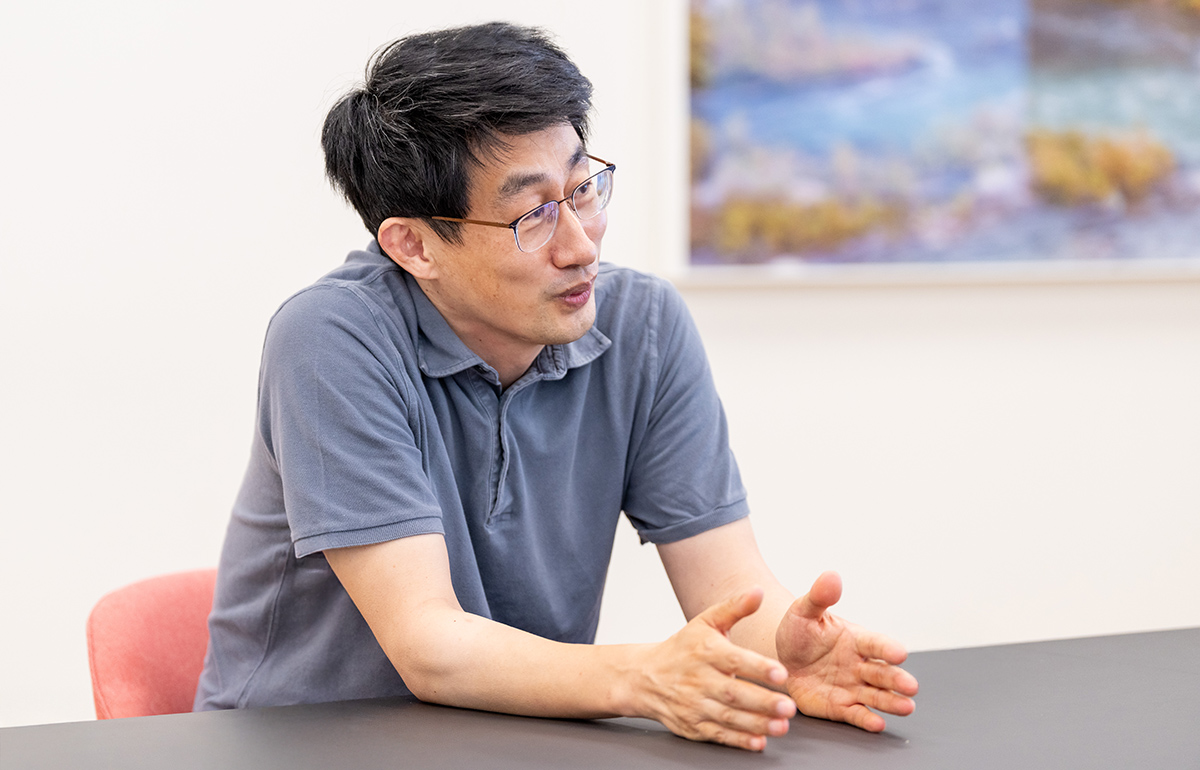
――"Enjoying while arguing" sounds pretty challenging...
Shin:
Having arguments is actually the fastest way to understand what you can't see on your own. The reason we have discussions with teammates is to gain perspectives we don't already have. Something that might take 10 hours to figure out on your own can be revealed instantly if someone just clearly says, "No, that's not right." That's why I believe emotional reactions aren't necessary at work--discussions should be a process where we compare things we each find unacceptable from our professional perspectives. And that's fun, isn't it? In terms of soccer, it is like skilled soccer players passing the ball to each other.
It's Not About "Cutting Headcount"
――How do you balance the idea of "Lean & Mean Teams" with the concept of gathering a wide range of opinions through "Open Communication"?
Shin:
I believe the more people you have, the better. But if there are participants who do not contribute, that results in a net loss. My basic rule for meetings is: if you're not going to speak up, there's no point in being there. If all you're doing is comparing knowledge, two people is faster. The reason we add a third person is because a third person can bring added value. On the other hand, communication costs triple with an additional person. If their contribution justifies that cost, then increasing the people in the discussions makes sense.
Throughout the history of IT, every team that achieved something extraordinary was, without exception, a lean and mean team. The reason is simple: in order to build the best possible product, they used "Open Communication" to exchange ideas, and brought together the maximum number of professionals who could contribute within a limited time frame. When a team becomes too large, communication costs alone can triple. I believe that's why so many innovations have come from small, elite teams--not because of individual capability, but because of structural dynamics.
The message behind "Lean & Mean Teams" isn't "have fewer people," but "determine the optimal number." What matters is not the "lean" but the "mean." When a team is truly composed of top talent, it naturally ends up being small. For example, a conversation among three people may feel open and casual, but with five, the dynamic can shift dramatically. That's why we need to create optimized teams made up only of top contributors.
――What is your view on this, Sakaue san?
Sakaue:
If I may add one more point to what Shin san said, it would be the aspect of accountability. If someone is truly a top performer, I believe they should be able to explain their actions themselves. Asking someone else to explain on your behalf is something that should never happen. Also, the ability to clearly explain day-to-day course corrections and lead others is crucial. It's a big mistake to assume that others will just "get it" without being told. That is why, particularly for leaders at the forefront, I think the ability to communicate with clarity and care is indispensable.
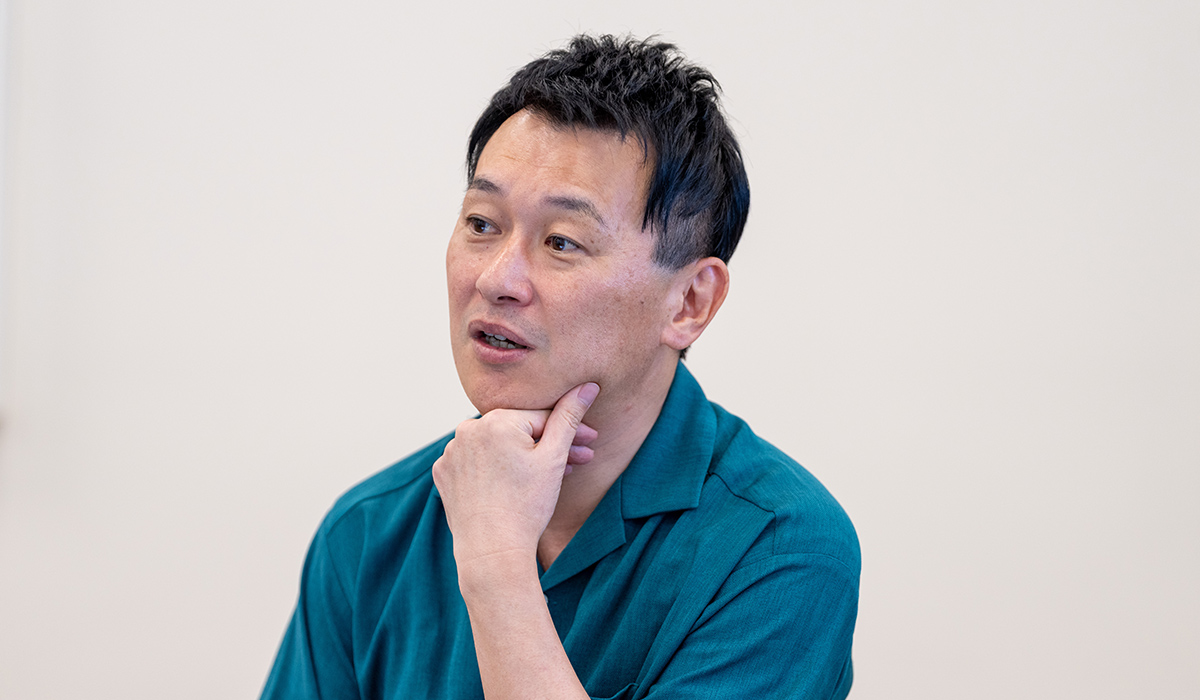
――Finally, could you share a message for employees who are putting these values into practice?
Shin:
I believe what matters most for everyone working at LY Corporation is personal growth. The process of accomplishing something here that you were unable to achieve elsewhere--and delivering services that truly moves users--will undoubtedly foster growth on many levels. Time is our most valuable resource. Using that time together to create something that moves users, and in doing so, growing both as individuals and as a company. The values of LY Corporation were established to enable exactly that. My hope is that through creating great services, each person will be able to say, "I'm truly glad I joined this company."
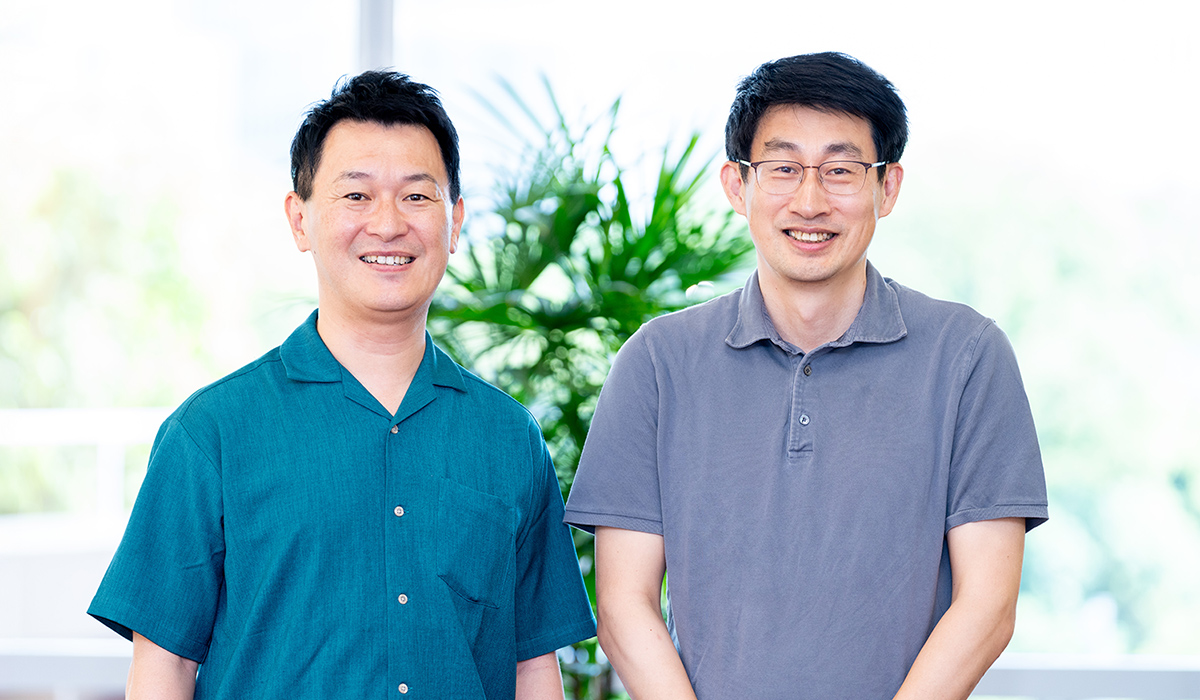
Interview date: May 21, 2025
Written by: LY Corporation Culture Development Team, Photos by: Kuramasu Takashi
*The affiliations and titles in the article are as of the time of the interview.

- About The LY Corporation Story
- Making daily life more convenient and exciting for everyone.
As our corporate blog, The LY Corporation Story will share the inside story behind the challenges that we take on to create WOW! as well as the thoughts and feelings behind them.


